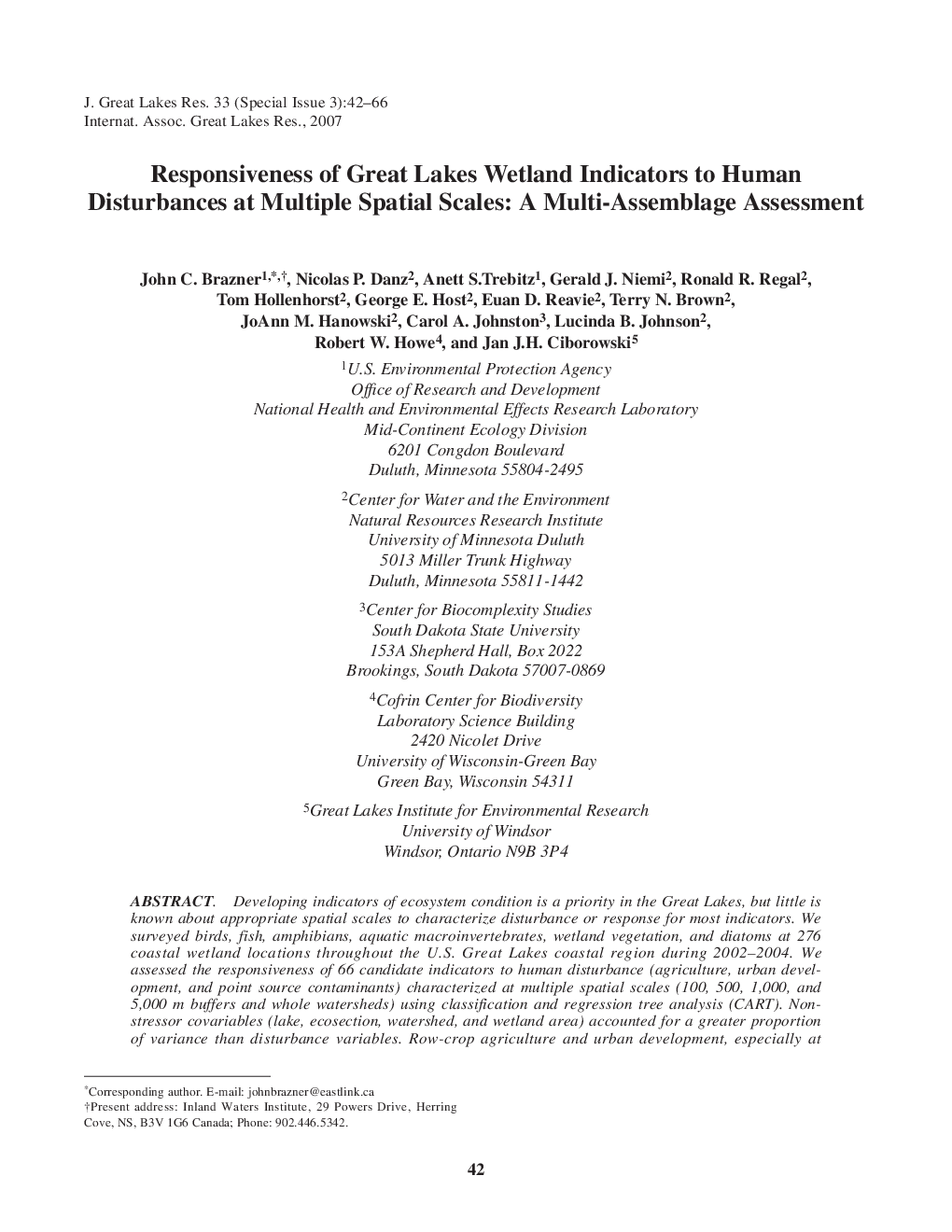| Article ID | Journal | Published Year | Pages | File Type |
|---|---|---|---|---|
| 4399448 | Journal of Great Lakes Research | 2007 | 25 Pages |
Abstract
Developing indicators of ecosystem condition is a priority in the Great Lakes, but little is known about appropriate spatial scales to characterize disturbance or response for most indicators. We surveyed birds, fish, amphibians, aquatic macroinvertebrates, wetland vegetation, and diatoms at 276 coastal wetland locations throughout the U.S. Great Lakes coastal region during 2002-2004. We assessed the responsiveness of 66 candidate indicators to human disturbance (agriculture, urban development, and point source contaminants) characterized at multiple spatial scales (100, 500, 1,000, and 5,000 m buffers and whole watersheds) using classification and regression tree analysis (CART). Nonstressor covariables (lake, ecosection, watershed, and wetland area) accounted for a greater proportion of variance than disturbance variables. Row-crop agriculture and urban development, especially at larger spatial scales, were about equally influential and were more explanatory than a contaminant stress index (CSI). The CSI was an important predictor for diatom indicators only. Stephanodiscoid diatoms and nest-guarding fish were identified as two of the most promising indicators of row-crop agriculture, while Ambloplites rupestris (fish) and Aeshna (dragonflies) were two of the strongest indicators of urban development. Across all groups of taxa and spatial scales, fish indicators were most responsive to the combined influence of row-crop and urban development. Our results suggest it will be critical to account for the influence of potentially important non-stressor covariables before assessing the strength of indicator responses to disturbance. Moreover, identifying the appropriate scale to characterize disturbance will be necessary for many indicators, especially when urban development is the primary disturbance.
Related Topics
Physical Sciences and Engineering
Earth and Planetary Sciences
Earth and Planetary Sciences (General)
Authors
John C. Brazner, Nicolas P. Danz, Anett S. Trebitz, Gerald J. Niemi, Ronald R. Regal, Tom Hollenhorst, George E. Host, Euan D. Reavie, Terry N. Brown, JoAnn M. Hanowski, Carol A. Johnston, Lucinda B. Johnson, Robert W. Howe, Jan J.H. Ciborowski,
